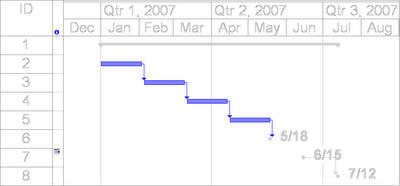Cost Management is Not Optional
All too often, I see companies and/or projects where project cost management is not done at all. Project Managers just don't deal with the money aspect. In many companies, the PM is not expected to manage the cost of the project. In some, the PM is even discouraged from doing this.
I saw many organizations where the executives somehow did not even know that PMs can do this for their projects, let alone should do it. When the (skilled) PM brings the topic up and demonstrates how this can be done and how beneficial this is, they are surprised. And happy.
But it is a fact that in many places, PMs are not required to manage the project cost.
The point I want to make in this post is:
Even if you (the PM) are not expected to manage your project cost, you should still do it!
Considering the fact that cost is one of the 3 famous project constraints, this is one of the most fundamental skills that PMs must have and must apply for their projects. And, it is one the most important activities that the PM must engage in. Even if the PM is not required to manage cost, they must feel compelled to do it anyway. At least two reasons:
- For your own professional development. As a PM you must become skilled in cost management. Without some basic skill and experience in this area, IMHO, you cannot be regarded as a senior professional. If you work in a company where cost management is not expected of you, what better environment can you have to practice and learn? And educate the management?
- Cost management is a critical tool for better managing and executing projects and programs. Without cost management, it is impossible to calculate such things as ROI, NPV and Earned Value. If a company wants to have a solid project/program strategy, it must use these (and many other) tools. Without project cost management, the company gropes in the dark.
Even minimal cost management can provide significant benefit
Forget all the company financial policies and general finance management theory. All you need to do is estimate costs and track expenses for your project. That's all. You'll be surprised how many good things can come out of this. And...
Minimal cost management is actually pretty easy to do
Current project management software tools make it relatively easy to estimate costs and track expenses. Here are some guidelines, using MS Project (although any project management software tool can do that).
In MS Project, go to the Resource Sheet. All your resources are listed here. For each resource it is possible to define various parameters. One of them is Std. Rate (= Standard Rate). This is measured in $/hour. All you need to do is enter the rate of each resource in the table. True, usually, you don't know how much a person's salary is but I am sure you can make a reasonable guess. As soon as you entered rates for all the resources, MS Project automatically calculates the cost of each task in your schedule, plus roll-up of totals to summary tasks, all the way up to the full project cost. Plus totals and breakdowns per resource. That's it. So simple, so powerful.
You can also easily add fixed costs (such as purchases, travel expenses, fixed-price consultaning, etc.). Add a task for each of the fixed cost items. Add the Fixed Cost pre-defined column in the table (see MS Project help on how to add columns). For each fixed cost entry in the schedule, enter its cost in the Fixed Cost column. That's it. So simple, so powerful.
Don't forget to baseline.
As the project progresses, be sure to update the schedule to correctly reflect the project status. You update the tasks (start date, end date, percent complete) and MS Project will calculate updated current costs. And with the baseline that you remembered to save, MS Project will also calculate all the Earned Value info for you, full break down and roll up.
Once you start doing this minimal work you will be surprised how easy and useful it is. And when you show it to your manager or executive (who did not even think you could do something like that), they will be delighted and never let you off the hook again.
This is why I say: cost management is not optional.
------------------------------------------------------------------------


